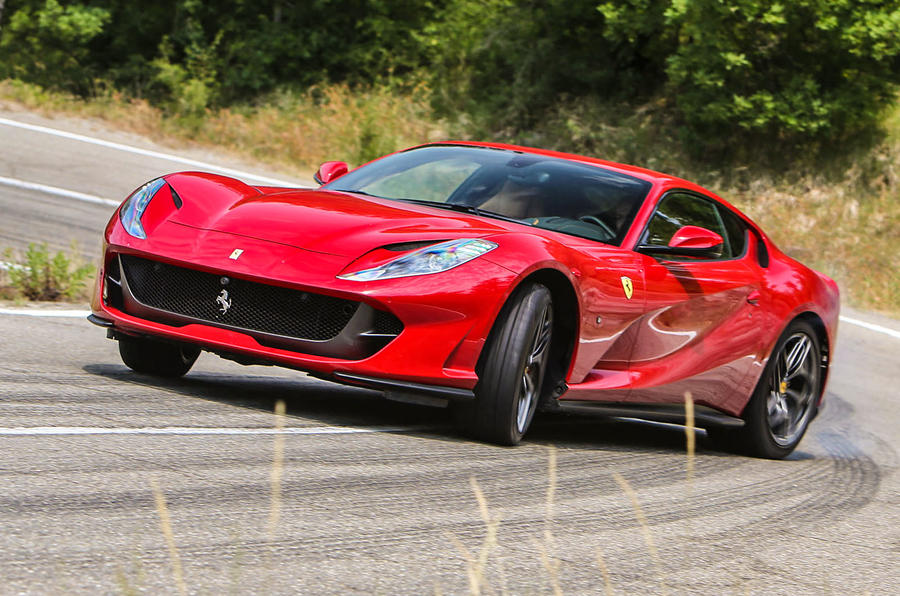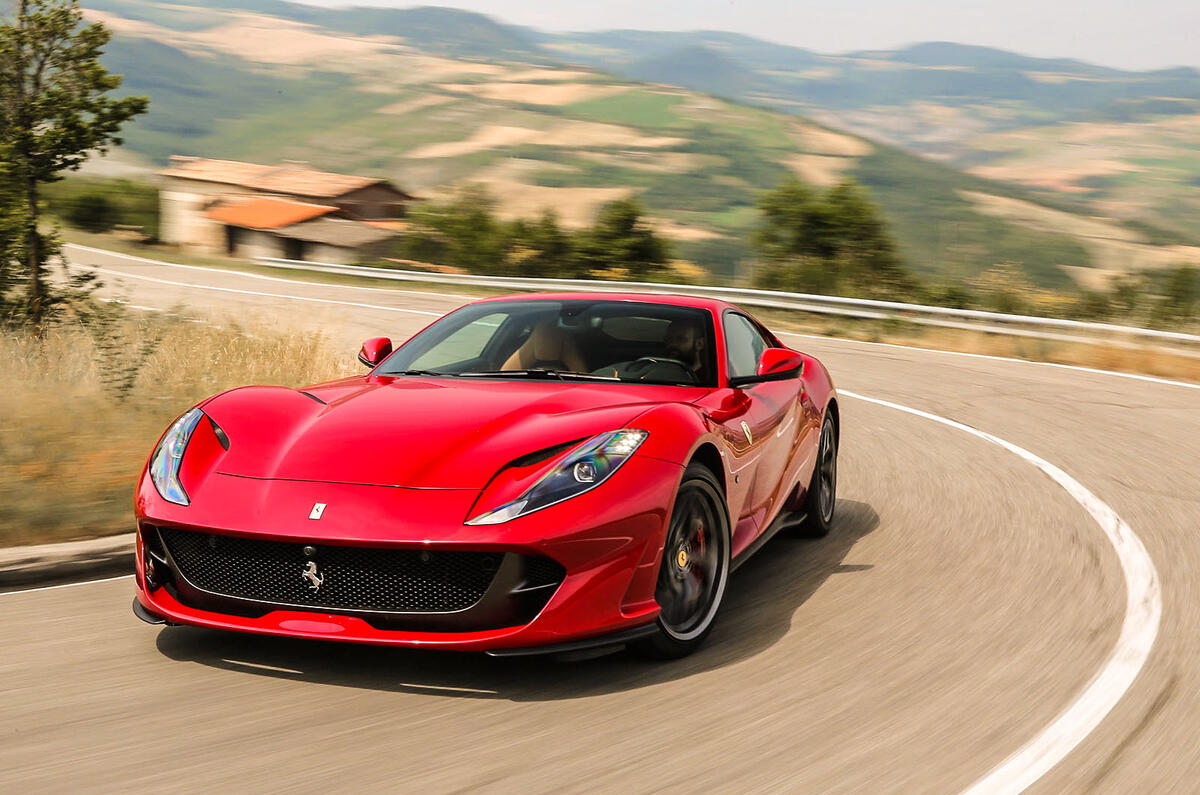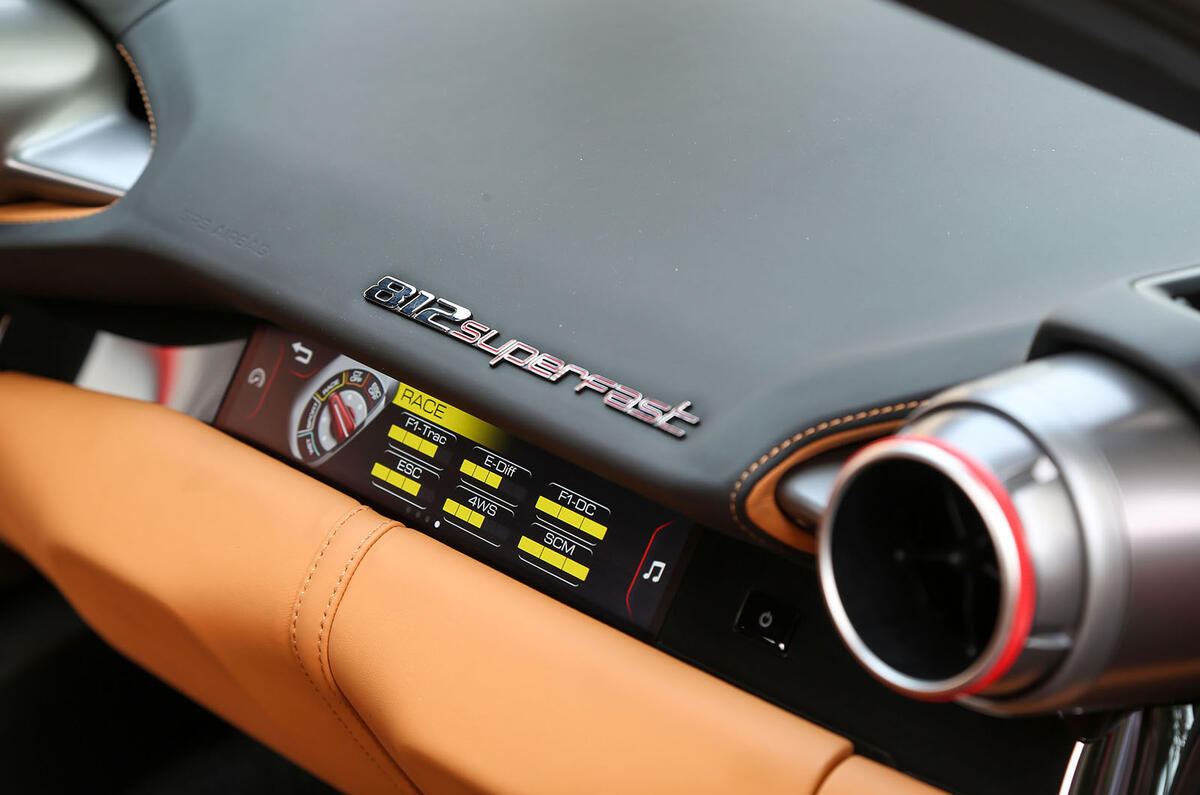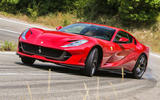What is it?
As names go, they don’t get much more literal than this. The Ferrari 812 Superfast is the latest super-GT car from Maranello, the newest in a long line of front-engined V12s, hence the ‘12’ in the title. It replaces the F12, which wasn’t exactly unsuperfast itself, what with its 730bhp and everything.
But now – and here comes the ‘8’ – peak power is up to 800 metric horsepower, or 789bhp, so if it wasn’t fast enough before, the chances are that it will be now.

How much power, Raffaele de Simone, Ferrari’s chief test driver and lead engineer, is too much? “If you have control, it’s never enough,” he says. Righto. Control, mind, was one of the things that the recent, limited-run F12tdf did not offer in quantities to match its 770bhp. The spiky, angry, hard-to-drive special edition felt like it made double that power when it arrived in doses so heady that they overwhelmed a chassis featuring a rear-steer system seemingly intended to confound both itself and its driver.


Ferrari called that system a ‘virtual short wheelbase’ but, in effect, it did precisely the opposite. By steering the rear wheels in the same direction as the fronts it was adding stability – virtual length – to the tdf’s wheelbase, in an attempt, at which it would mostly fail, to tame a chassis that had been made deliberately unstable by fitting extremely wide front tyres. Their grip and willingness to turn made the tdf feel extraordinarily agile for its size, but combined with the extra power, they also made it impossibly lively, but that was okay because it was a limited-run model only for those in both the club and the right mood.

This new 812 Superfast, by way of contrast, is a regular production model, potentially driven by anyone, whatever their mood. So, naturally, it gets precisely the same tyre sizes as the tdf, the same rear-steer system, and even more horsepower. Gulp.

But hold on. Here’s yer man de Simone again, telling me that the 812 Superfast is, in fact, easier to drive on the limit even than the F12. Which is no bad thing. The tyres are regular Pirelli P Zeros, the rear-steer system has been honed and tweaked, and it now talks, along with the electronically controlled differential, the stability control and the drift control, to Ferrari’s first application of electrically assisted power steering, itself replacing a hydraulic set-up. It’s all damnably clever.

Meantime, the rest of the news. This V12 engine’s block made its debut in the 6.0-litre Enzo of 2002. Since then it has grown in capacity and changed in internals and ancillaries and heads and so on, but the block casting itself remains precisely the same. It reached its maximum bore a while ago, but here, now, stroked out to 6.5 litres, it is as large in capacity as it can possibly be.

Is it approaching the end of its era, then? Not a bit of it, says Ferrari. Yes, it now has a fuel injection system that operates at 350bar (up from 200) and a redline at 8900rpm, but there’s still more to come, apparently. Given that it’s a normally aspirated petrol engine with an already hyperefficient intake and exhaust cycle, that can only mean one thing: new materials that will let it spin faster, so in its next incarnation it should rev past 9000rpm, easily. I mentioned it’s a 6.5-litre V12, right? How wonderful.
































































Join the debate
Add your comment
Ugly
No eraser for my wishlist
Front Grille